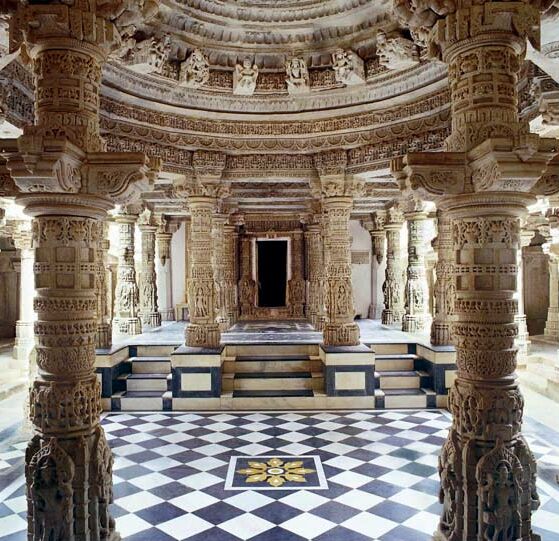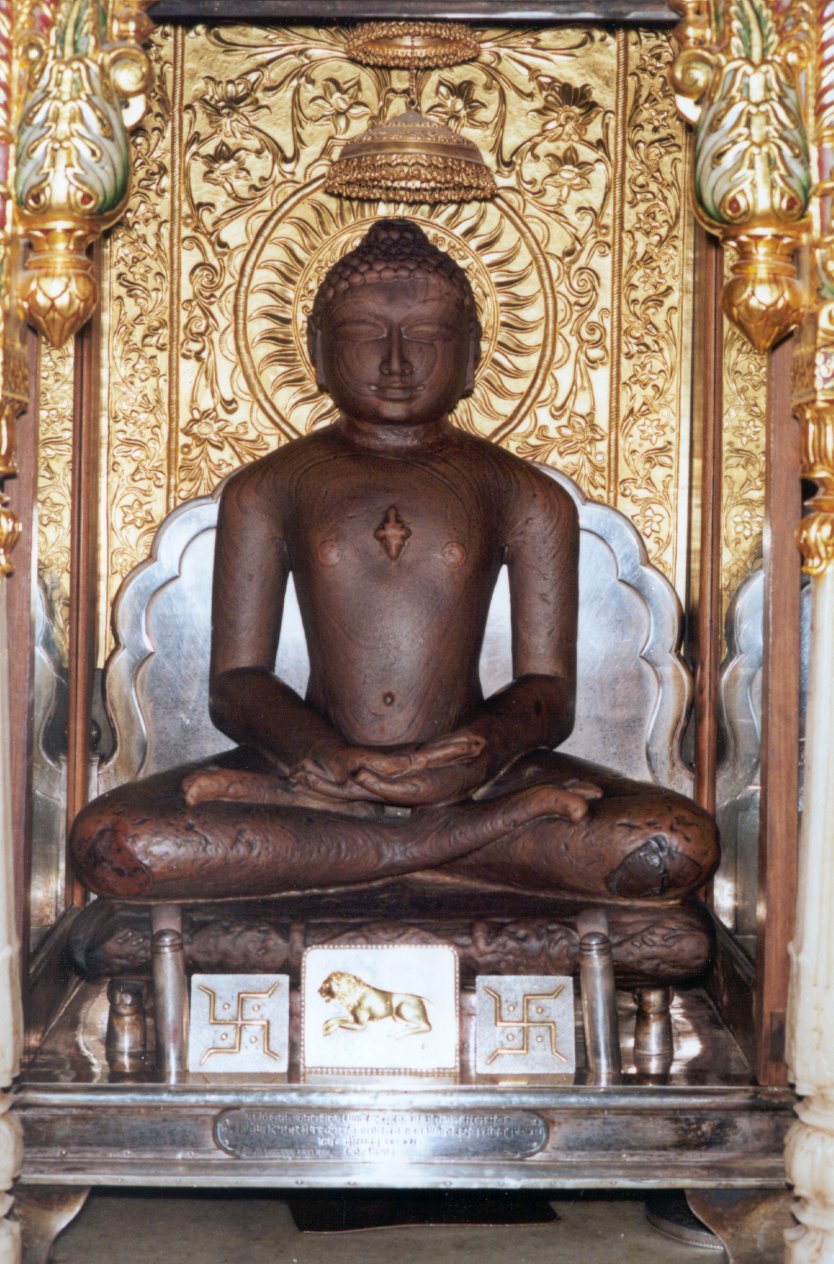|
Vaghela Derol
Derol, popularly known as Vaghela Derol, is a village situated in Khedbrahma Taluka of Sabarkantha District in Gujarat, India. The village was formerly ruled by Vaghela kings hence the name Vaghela's Derol. It is located on the banks of Harnav river. There is an ancient Shiva Temple in the village. There are three Jain temples believed to have been constructed in 12th century. Two of them belongs to Digambara Jains which are dedicated to Parshwanatha and Adinatha respectively while the other one belongs to Swetambara Jains. It is 10 km away from Khedbrahma Khedbrahma () is a town and a Tehsil, taluka headquarter in Khedbrahma Taluka of Sabarkantha district, Sabarkantha district, Gujarat, India. It is situated on the banks of Harnav river. The town is connected with mythological history and has bee .... There is a Primary Health Centre and a post office. References Villages in Sabarkantha district {{Sabarkantha-geo-stub ... [...More Info...] [...Related Items...] OR: [Wikipedia] [Google] [Baidu] |
Sabarkantha District
Sabarkantha district is one of the 33 districts of Gujarat state of India, located in the Northeast India, northeastern part of the state. The administrative headquarters of the district are located in Himatnagar and the National Highway no. 48 passes though this district. The district comprises a total of 1,389 villages (including Pedhmala and Takhatgadh Kampa) and has an estimated population of 2.5 million people as of January 2025 based on recent demographic projections. Geography and climate Sabarkantha District is bounded by Rajasthan to the north and northeast, the Banaskantha district and the Mehsana district to the west, the Gandhinagar district to the south and the Aravalli district to the southeast. It is spread across an area of 5390 km and its geographical location: 23.030 to 24.30 N latitude and 72.43 to 73.39 E. longitude. The district has a climate of a minimum temperature of 9o C in the winter and a maximum temperature of 49o C in the summer. The region also ... [...More Info...] [...Related Items...] OR: [Wikipedia] [Google] [Baidu] |
Gujarat
Gujarat () is a States of India, state along the Western India, western coast of India. Its coastline of about is the longest in the country, most of which lies on the Kathiawar peninsula. Gujarat is the List of states and union territories of India by area, fifth-largest Indian state by area, covering some ; and the List of states and union territories of India by population, ninth-most populous state, with a population of 60.4 million in 2011. It is bordered by Rajasthan to the northeast, Dadra and Nagar Haveli and Daman and Diu to the south, Maharashtra to the southeast, Madhya Pradesh to the east, and the Arabian Sea and the Pakistani province of Sindh to the west. Gujarat's capital city is Gandhinagar, while its largest city is Ahmedabad. The Gujarati people, Gujaratis are indigenous to the state and their language, Gujarati language, Gujarati, is the state's official language. The state List of Indus Valley civilisation sites#List of Indus Valley sites discovered, ... [...More Info...] [...Related Items...] OR: [Wikipedia] [Google] [Baidu] |
Vaghela Dynasty
The Vaghela dynasty ruled the Kingdom of Gujarat in India in the 13th century CE, with their capital at Dholka. They were the last Hindu dynasty to rule Gujarat before the Muslim conquest of the region. Early members of the Vaghela family served the Chaulukya dynasty in the 12th century CE, and claimed to be a branch of that dynasty. In the 13th century, during the reign of the weak Chaulukya king Bhima II, the Vaghela general Lavanaprasada and his son Viradhavala gained a large amount of power in the kingdom, although they continued to nominally acknowledge Chaulukya suzerainty. In the mid-1240s, Viradhavala's son Visaladeva usurped the throne, and his successors ruled Gujarat until Karna Vaghela was defeated by Nusrat Khan of the Delhi Sultanate in 1304 CE, and lost Gujarat. Origin The Vaghelas usurped power from the Chaulukya dynasty. According to the 14th century chronicler Merutunga, the earliest known member of the Vaghela family – "Dhavala" – married ... [...More Info...] [...Related Items...] OR: [Wikipedia] [Google] [Baidu] |
Shiva
Shiva (; , ), also known as Mahadeva (; , , Help:IPA/Sanskrit, [mɐɦaːd̪eːʋɐh]) and Hara, is one of the Hindu deities, principal deities of Hinduism. He is the God in Hinduism, Supreme Being in Shaivism, one of the major traditions within Hinduism. Shiva is known as ''The Destroyer'' within the Trimurti, the Hinduism, Hindu trinity which also includes Brahma and Vishnu. In the Shaivite tradition, Shiva is the Supreme Lord who creates, protects and transforms the universe. In the goddess-oriented Shaktism, Shakta tradition, the Supreme Goddess (Devi) is regarded as the energy and creative power (Shakti) and the equal complementary partner of Shiva. Shiva is one of the five equivalent deities in Panchayatana puja of the Smarta Tradition, Smarta tradition of Hinduism. Shiva has many aspects, benevolent as well as fearsome. In benevolent aspects, he is depicted as an Omniscience, omniscient yogi who lives an Asceticism#Hinduism, ascetic life on Kailasa as well as a house ... [...More Info...] [...Related Items...] OR: [Wikipedia] [Google] [Baidu] |
Jain Temple
A Jain temple, Derasar (Gujarati: દેરાસર) or Basadi (Kannada: ಬಸದಿ) is the place of worship for Jains, the followers of Jainism. Jain architecture is essentially restricted to temples and monasteries, and Jain buildings generally reflect the prevailing style of the place and time they were built. Jain temple architecture is generally close to Hindu temple architecture, and in ancient times Buddhist architecture. Normally the same builders and carvers worked for all religions, and regional and periodic styles are generally similar. For over 1,000 years, the basic layout of a Hindu or most Jain temples has consisted of a small garbhagriha or sanctuary for the main murti or idol, over which the high superstructure rises, then one or more larger mandapa halls. Māru-Gurjara architecture or the "Solanki style", is a particular temple style from Gujarat and Rajasthan (both regions with a strong Jain presence) that originated in both Hindu and Jain temples a ... [...More Info...] [...Related Items...] OR: [Wikipedia] [Google] [Baidu] |
Digambara
''Digambara'' (; "sky-clad") is one of the two major Jain schools and branches, schools of Jainism, the other being ''Śvetāmbara'' (white-clad). The Sanskrit word ''Digambara'' means "sky-clad", referring to their traditional monastic practice of neither possessing nor wearing any clothes. Nakedness was the ideal practice of lord Mahavira and his immediate followers. Mahavira emphasized the importance of nakedness for monks. It symbolizes complete detachment and is an ideal form of conduct. Mahavira believed that renouncing clothes made the body immune to external influences like heat and cold, increasing resilience. Without clothes, a monk would avoid the distractions of acquiring, maintaining, and washing garments, allowing him to focus on spiritual growth and self-discipline. Digambara and Śvetāmbara traditions have had historical differences ranging from their dress code, their temples and iconography, attitude towards female monastics, their legends, and the texts the ... [...More Info...] [...Related Items...] OR: [Wikipedia] [Google] [Baidu] |
Rishabhanatha
Rishabhanatha (Devanagari: ऋषभनाथ), also Rishabhadeva (Devanagari: ऋषभदेव, ), Rishabha (Devanagari: ऋषभ, ) or Ikshvaku (Devanagari: इक्ष्वाकु, ''Ikṣvāku''), is the first (Supreme preacher) of Jainism. He was the first of twenty-four teachers in the present half-cycle of time in Jain cosmology and called a "ford maker" because his teachings helped one cross the sea of interminable rebirths and deaths. The legends depict him as having lived millions of years ago. He was the spiritual successor of Sampratti Bhagwan, the last Tirthankara of the previous time cycle. He is also known as Ādinātha (), as well as Adishvara (first Jina), Yugadideva (first deva of the yuga), Prathamarajeshwara (first God-king) and Nabheya (son of Nabhi). He is also known as Ikshvaku, establisher of the Ikshvaku dynasty. Along with Mahavira, Parshvanath, Neminath, and Shantinath, Rishabhanatha is one of the five Tirthankaras that attract the most d ... [...More Info...] [...Related Items...] OR: [Wikipedia] [Google] [Baidu] |
Khedbrahma
Khedbrahma () is a town and a Tehsil, taluka headquarter in Khedbrahma Taluka of Sabarkantha district, Sabarkantha district, Gujarat, India. It is situated on the banks of Harnav river. The town is connected with mythological history and has been pilgrim site for centuries. The 11th century Brahma Temple, Khedbrahma, Brahma, Durga, Ambika and Pankhnath Mahadev temples are the oldest monuments of the town. The town has an old stepwell, the Brahma Vav. It was under Paramara dynasty, Parmaras, Chaulukyas and Parihar (clan), Pariharas before it came under Idar State in 13th century. Etymology ''Brahmakshetra Mahatmaya'' mentions that Brahma had established the town so the region was known as Brahmakshetra, the land of Brahma. He ploughed the land here and a river had flown out of it which was later known as Harnav, a corruption of Hiranyaganga which was named after Hiranyagarbha, another name of Brahma. According to the inscription (Vikram Samvat, Samvat 1256) in Aditi stepwell; the ... [...More Info...] [...Related Items...] OR: [Wikipedia] [Google] [Baidu] |
Primary Health Centre (India)
Primary Health Centre (PHCs), sometimes referred to as public health centres, are state-owned rural and urban health care facilities in India. They are essentially single-physician clinics usually with facilities for minor surgeries. They are part of the government-funded public health system in India and are the most basic units of this system. As on 31 March 2019 there are 30,045 PHCs in India in which 24,855 are located on rural areas and 5,190 are on urban areas. The idea of creating PHCs in India was set forward by Bhore committee in 1946. __TOC__ List Primary Health Centres programmes are listed below: * Provision of medical care * Maternal-child health including family planning * Safe water supply and basic sanitation * Prevention and control of locally endemic diseases * Collection and reporting of vital statistics * Education about health * National health programmes, as relevant * Referral services * Training of health guides, health workers, local dais and health a ... [...More Info...] [...Related Items...] OR: [Wikipedia] [Google] [Baidu] |








